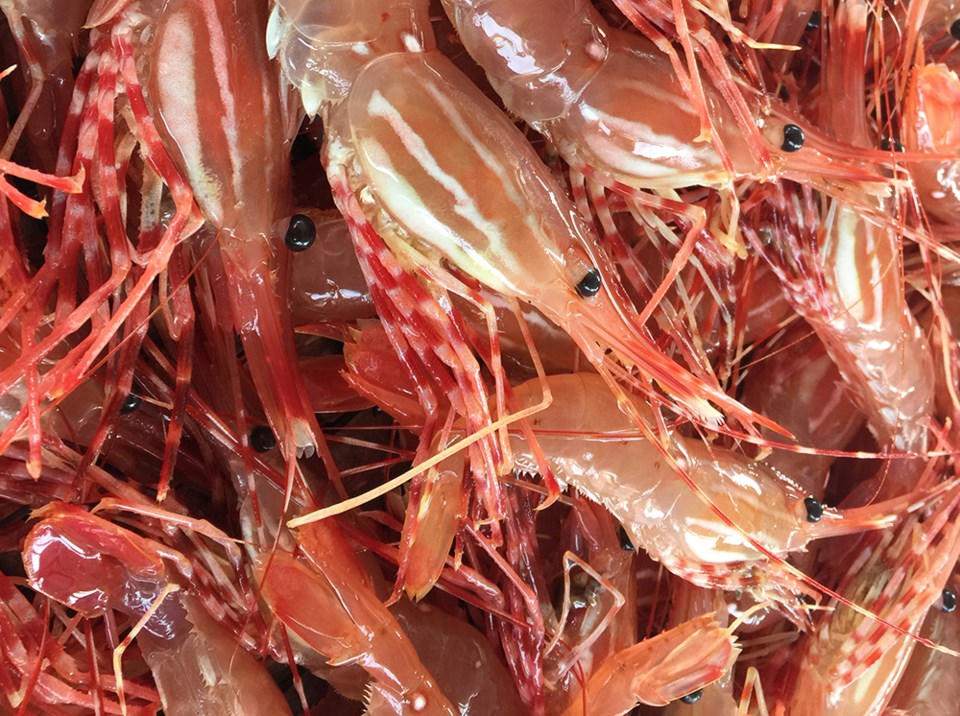Federal regulations will allow prawn fishers to freeze their catch at sea, which is valued by those involved in the prawn fishery, according to a qathet region fisher.
“We get to keep some product locally and supply the local market that way,” said Shane Reid, captain of CFV Double Odds. “This means we don’t have to export it all. It’s a lot nicer when you get to keep some home.
“The local people like it. Without that option, you’d only have a month or a month and a half to go down to the dock and get fresh prawns, unless you go out and catch your own.”
Reid said freezing prawn tails at sea is the best way to do it, without any chemicals, in sea water. He said the prawns last for months in the frozen state.
“Unless you can get fresh prawns, that’s the best alternative,” he added.
Reid said being able to sell packaged prawns is advantageous for his business. He usually sells out of prawns before Christmas. This year, he ran out at the beginning of December. He has run out of prawns as early as August.
“It’s getting more popular every year,” said Reid. “I’m glad for the outcome that we can continue to freeze at sea and supply the frozen prawns for the local market.
“There was a lot of work done by our industry, the Pacific Prawn Fishermen’s Association (PPFA) and various politicians, and the local public put their name on petitions, too. It’s been an ongoing process for more than a year now and we got the right outcome.”
According to a media release from federal minister of fisheries, oceans and the Canadian Coast Guard Joyce Murray, feedback from the PPFA and prawn harvesters over the course of the 2020 to 2021 season helped inform Fisheries and Oceans Canada’s efforts to clarify existing regulations that apply to the practice of onboard freezing of prawns (known as prawn tubbing) in the commercial prawn fishery. The release stated that for the 2022 to 2023 prawn and shrimp by trap season, harvesters may continue using existing containers to package frozen prawn tails in liquid, such as seawater, onboard their vessels.
This decision gives harvesters adequate time to prepare for a transition to new standards for packaging frozen prawn tails in seawater onboard vessels in 2023.
The release stated that for the 2023 season, Fisheries and Oceans Canada intends to update conditions of licence for the commercial prawn fishery to include requirements for the use of transparent packaging and a maximum packaging volume of up to 710 ml – a size commonly used by industry– for packaging frozen prawn tails in liquid onboard vessels. This clarification in the conditions will support fishery officers’ ability to readily determine the species, number, weight and size of the catch.
“The draft 2022 to 2023 prawn and shrimp by trap integrated fisheries management plan continues our government’s ongoing commitment to enhancing the abundance of the Pacific prawn fishery for future generations,” stated Murray. “Through our consultations, we heard the need for predictability and were able to reach a workable proposal that provides the industry certainty, while ensuring the fishery’s long-term sustainability.”
The release stated that proactive conservation measures are critical to sustain a healthy Pacific prawn population today, and to restore abundant stocks for future generations. Close collaboration between the Government of Canada and harvesters is key to getting this important work done, according to the release.



.jpeg;w=120;h=80;mode=crop)
